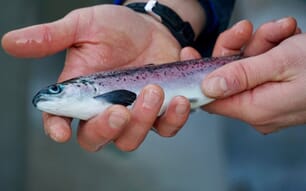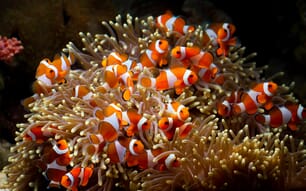“Aquaculture is at a critical juncture. The significant decrease in the wild fish population means that they must take the lead in continuing to ensure genetic diversity while still breeding healthy, protein-rich, and disease resistant fish,” said Dr Gil Ronen, PhD, CEO, NRGene.
"Mapping a full and reliable reference genome is a critical step toward efficient breeding, and the trout is simply the first of many critical species for the aquaculture industry that must be mapped.”
NRGene worked closely with scientists at USDA to create the genome map. NRGene’s DeNovoMAGICTM tool assembled short DNA reads delivered by the USDA and University of Illinois into a complete genome map of 2.17 G bp made of very long DNA scaffolds, within three weeks.
The trout is a tetraploid, containing four homologous sets of chromosomes. Scaffolds are now being ordered by USDA researchers based on a new genetic map produced by the USDA in collaboration with scientists from Norway.
“The bottom line is that the new assembly provides major improvements in the trout genome map in all categories including genome coverage and precision over the publicly available version,” said Dr Yniv Palti, PhD, of the USDA-Agricultural Research Service.
"Our group at the USDA is now using the new genome scaffolds from NRGene to generate an improved reference genome before releasing it to the public."
The N50 of the genome map is greater than 1.7 million base pairs, four-fold higher than the previous version published just a year ago, making the new version a more workable and useful reference genome for trout.
“For this work we used the latest Illumina instruments and chemistries, including the rapid 250nt paired-runs and v4 high-output,” said Dr Alvaro Hernandez, PhD, Director of the DNA Sequencing Unit, University of Illinois.
“The high yields and pristine sequence quality allowed us to use cost-effective library construction strategies that integrate seamlessly with NRGene's superior assembly tools.”
Based on the speed of delivery and DeNovoMAGICTM’s cost-effective technology, aquaculture organizations don’t have to wait for reference genome assemblies from multi-partner, multiyear consortia.
NRGene’s technology delivers not only the reference genome but also a complete, workable, and efficient genotyping tool, accelerating breeding and significantly reducing bioinformatics efforts and investment.
Within a mere three months, NRGene provides complete genome mapping, diversity analysis, and simple genotyping tools to support breeding. Breeders in aquaculture can now use more effective breeding practices such as genomic selection and association studies that have already revolutionized the breeding of other species, such as cattle and swine.
As consumers increasingly focus on protein sources with a lower ecological footprint, the aquaculture industry faces significant growth opportunities and challenges. They need to accelerate breeding to speed time to market to meet these global demands.
“Aquaculture breeding was previously done with their hands tied behind their backs, as the most basic genetic infrastructure such as a reference genome and genomic diversity databases were absent even for the key commercial species," concluded Dr Ronen.
“With NRGene’s big data genomic capabilities, this is no longer the case.”



